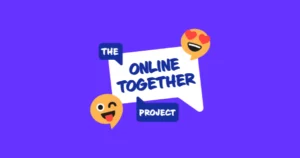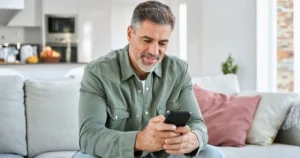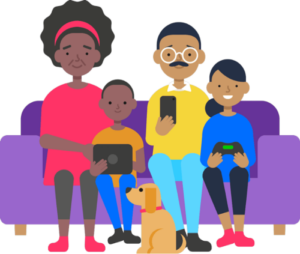Why are gender stereotypes having such an impact on young people? Children can be easily pressured to interact with others in pre-conceived ways, based on the norms bred by internet culture.
Psychologist Dr Linda Papadopoulos provides advice to help tackle this issue with young people.
Summary
- Online interactions and experiences can shape children’s ideas about people.
- Children encounter gender stereotypes across social and gaming spaces online.
- Many children might subscribe to stereotypes and reject those who don’t.
- Stereotypes can impact children’s body image, confidence and self-esteem.
- There are things you can do to counter gender stereotypes.
- Find more resources to support children’s digital wellbeing.
How the online world shapes young people’s ideas
The online world is an essential part of young people’s lives, a space for learning, downtime and a way to connect with others. The interactions children experience and the content they’re exposed to online can play a major role in shaping their ideas and views about certain groups of people, and ultimately impact the way they treat others.
I’ve been working with Internet Matters and Samsung Electronics UK on The Online Together Project – a new interactive tool to help children and young people develop their critical thinking skills in order to foster a positive and inclusive digital experience for all. The first phase of the project focuses on helping children and young people challenge gender stereotypes they come across online.
What is the impact of gender stereotypes online?
Recent figures in the Cybersurvey from Youthworks and Internet Matters* show that over one in 10 children aged 11+ has received sexist comments online, increasing to one in five for those children who prefer not to state their gender. With an increase in gender-related harmful content and online abuse, it can be challenging for children and young people to establish autonomous, unbiased opinions and attitudes about genders, differences, and equality.
From online gaming to social media, children and young people encounter gender stereotypes in various ways. One of the problems in recent years has been the way that young girls are objectified online. Boys, on the other hand, tend to be hyper-masculinised – this preconception of gender can impact the way young people interact with others.
Pressure to conform to stereotypes
Children can be easily pressured to interact with others in pre-conceived ways, based on the norms bred by internet culture. Young people seek out what it means to be: good or bad, beautiful or not beautiful, smart or stupid. Children are likely to feel they either need to adhere to these stereotypes, or question those that don’t.
The fact that so much of what they are exposed to online is visual means that many of these complex ideas around how people behave or express themselves online are distilled down to basic and often unhelpful concepts. Children and young people of different sexes feeling like they need to conform to be a certain size and shape to gain popularity and self-worth amongst their peers. In effect becoming caricatures of what it means to be male or female in order to belong regardless of how comfortable this feels. Ultimately this means that the nuance around critical discussions that help a child construct their identity is lost and instead replaced by simplistic often restrictive indicators of femineity and masculinity.
Importance of inclusivity and acceptance
If children and young people feel they need to confine themselves to a particular stereotype they see online based on very narrow ideals, this is going to affect not only their body image but their confidence and overall self-esteem. The more critically children are able to assess, accept and value the images they are presented with the less likely they will be to feel pressure to adhere to them and the more accepting and kinder they will be to others.
Speaking to young people about the importance of listening to others without bias, being welcoming to fresh ideas, and being open to what they stumble across online is key to helping them be tolerant to new views and ideas.
To help children and young people understand the way they think about, gender stereotypes, discrimination and sexual and /or violent content, here are five tips to support them.
5 top tips to support children and young people
Online platforms can present unattainable standards where children and young people believe that they must conform to a certain behaviour or look a certain way online in order to be accepted.
Children and young people need to be able to speak openly about what they experience online so that they can understand gender stereotypes and how to identify them in online spaces.
If you are unsure or uncomfortable with the topic, do your own research so that you can best support a child in an open and transparent conversation.
Gender stereotypes can promote unhealthy and old-fashioned attitudes that do not allow for different expressions of self. Children and young people may believe that they have to be a certain way to fit the ‘girl’ or ‘boy’ box and these gender stereotypes may further pressure them to act in harmful ways to themselves and towards others.
Some gender stereotypes may lead children and young people to have negative body images or even engage in self-harm. Open and transparent discussion to counter these stereotypes and promote positive body image is crucial.
Whether harmful behaviour is bullying, harassment or gender inequality, children and young people can offer support as upstanders by taking action, when it is safe to do so.
They can help stop the harmful behaviour, shifting the focus away, by calling out the person on their harmful actions and blocking or reporting them if necessary, by supporting the victim, by leaving the online situation (and then acting later) or by asking for help from a trusted adult or mentor.
As soon as children are old enough to engage online, they should be encouraged to know that they have a right to feel safe and respected online, as well as a responsibility to respect others.
You can teach digital resilience and provide strategies for showing respect online to everyone including others who are different or unique.
Age-appropriate strategies for children to adopt if they are exposed to or witness harmful behaviour online are also useful in guiding children to act as responsible citizens.
Once you have begun to have conversations with children and young people, do your best to keep these going and provide opportunities for them to discuss any questions or concerns that they have. The best approach is to start early and have regular conversations while using age-appropriate language for the situation.
Here are some examples of sample conversation starters. Feel free to adapt to a child’s age and level of maturity. After each statement, have an open and transparent conversation with them about respecting differences and accepting people as they are.
- “Is that a boy or a girl?”
- “Girls are ballerinas and boys are soldiers.”
- “Boys are smarter than any other gender”
- “Boys are not as nice as girls.”
As a parent carer, or a trusted adult working with young people, you are able to model empathy and understanding which will help children understand gender equality in their online spaces. Your support in gender equality conversations will aid children and young people to respect differences and uniqueness online.







